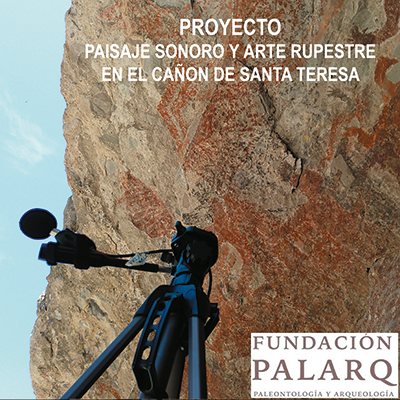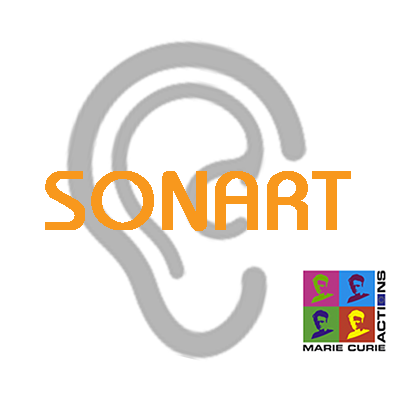
Welcome! This is the homepage of the archeoacoustica group. We are a cluster of researchers led by ICREA Research Professor Margarita Díaz-Andreu and based at the University of Barcelona. We are investigating the relevance of sound, music, and acoustics as factors for the production, location and active use of archaeological sites and landscapes. Follow us and check our publications and conference & talks page to receive updates on all these projects.
 ARTSOUNDSCAPES Project –
The ARTSOUNDSCAPES project deals with sound, rock art and sacred landscapes among past hunter- gatherers and early agricultural societies around the world. The potential of sound to stimulate…READ MORE
ARTSOUNDSCAPES Project –
The ARTSOUNDSCAPES project deals with sound, rock art and sacred landscapes among past hunter- gatherers and early agricultural societies around the world. The potential of sound to stimulate…READ MORE
 PALARQ Project –
This project funded by the Fundació Palarq (2017-18) aims to verify if acoustics was an essential element in the production of the rock art of the Sierra de San Francisco…READ MORE
PALARQ Project –
This project funded by the Fundació Palarq (2017-18) aims to verify if acoustics was an essential element in the production of the rock art of the Sierra de San Francisco…READ MORE
 MEMORISING Project –
How do societies remember? Memory is fragile and volatile and thus people around the world, and through time, have created ways to recall events and to share knowledge…READ MORE
MEMORISING Project –
How do societies remember? Memory is fragile and volatile and thus people around the world, and through time, have created ways to recall events and to share knowledge…READ MORE
 SONART Project –
The SONART (2014-2016) project was aimed at enhancing and improving the study of the archaeoacoustics of post-paleolithic rock art in the Mediterranean Europe. The project will focused on the relevance…READ MORE
SONART Project –
The SONART (2014-2016) project was aimed at enhancing and improving the study of the archaeoacoustics of post-paleolithic rock art in the Mediterranean Europe. The project will focused on the relevance…READ MORE
ARTSOUNDSCAPES project
Watch a recent conference presentation (12.6.2018) on the Project
The ARTSOUNDSCAPES project deals with sound, rock art and sacred landscapes among past hunter- gatherers and early agricultural societies around the world. The potential of sound to stimulate powerful emotions makes it a common medium for conferring places with extraordinary agency. Ethnographic and ethnohistorical sources indicate that these sites are often endowed with a sacred significance and, in many cases, they also receive special treatment, including the production of rock paintings. Despite the aural experience being an integral component of the human condition and a key element in ritual, archaeology has largely been unable to study it systematically. Rock art landscapes are no exception and, although some studies have been made, they have largely been reproached for their lack of scientific rigour and subjectivity. ARTSOUNDSCAPES will fully address this weakness by investigating the perception of sound in rock art landscapes from an interdisciplinary approach. Borrowing methods developed in acoustic engineering, the project will assess, from an objective and quantitative perspective, the acoustic properties of rock art landscapes in selected areas around the world: the Western/Central Mediterranean in Europe, Siberia in Asia, and Baja California in North America. Human experiences associated with altered or mystical states invoked by the identified special sonic characteristics of these landscapes will be further tested by exploring the psychoacoustic effects these soundscapes have on people and their neural correlate to brain activity. The project will also thoroughly survey ethnographic attitudes to sacred soundscapes based on both current premodern societies and ethnohistorical sources. The groundbreaking combination of this array of interdisciplinary approaches will facilitate the ultimate aim of the project: to propose a phenomenological understanding of sacred soundscapes among late hunter-gatherers and early agriculturalists around the world.
Research Line 1
Characterising the acoustic properties of rock art landscapes. Aim: to undertake a comprehensive analysis of the acoustic properties of a series of rock art landscapes around the world in order to acquire scientifically accurate data for surveying relationships between sonic effects, soundscape perception and the positioning of rock art.
Research Line 2
The psychoacoustics of rock art landscapes. Aim: to examine the sensations evoked in people by sounds and how they relate to auditory interpretations and physically measurable quantities; to explore auditory perceptions such as echolocation and the augmented audibility and intelligibility of distant sounds.
Research Line 3
Neuropsychology and emotion in rock art landscapes. Aim: to test whether stimulation of the brain with the sound recorded in RL1 can induce patterns of brain activity related to particular emotions such as those provoked by altered or mystical states
Research Line 4
Ethnographic and ethnohistorical sources. Aim: to critically revise ethnohistorical and ethnographic records related to music and sound among hunter-gatherers and early agriculturalists and/or also, if agreed with the PI, of other type of societies in the world, and to look at the ethnographic variation in sacred beliefs associated with sound in these same societies.
Research Line 5
Phenomenological analysis of sacred emotion and rock art soundscapes. Aim: to combine the results obtained in the previous lines and to attempt a phenomenological understanding of sacred soundscapes among late hunter-gatherers and early agriculturalists around the world.
PALARQ project
 This project funded by the Fundació Palarq (2017-18) aims to verify if acoustics was an essential element in the production of the rock art of the Sierra de San Francisco / Arroyo de San Pablo area (Baja California Sur, Mexico) and in the possible meaning that this could have for the communities who produced and enjoyed these paiintings. As objectives this project aims to investigate: 1. The relationship between the location of the paintings and the acoustic properties of the shelters in which they are found, especially in relation to echoes; 2. The connection between rock art and places of exceptional reverberation; and 3. The degree of audibility of hearing distant sounds that the painted rock shelters of the Santa Teresa Canyon may have.
This project funded by the Fundació Palarq (2017-18) aims to verify if acoustics was an essential element in the production of the rock art of the Sierra de San Francisco / Arroyo de San Pablo area (Baja California Sur, Mexico) and in the possible meaning that this could have for the communities who produced and enjoyed these paiintings. As objectives this project aims to investigate: 1. The relationship between the location of the paintings and the acoustic properties of the shelters in which they are found, especially in relation to echoes; 2. The connection between rock art and places of exceptional reverberation; and 3. The degree of audibility of hearing distant sounds that the painted rock shelters of the Santa Teresa Canyon may have.
MEMORISING project
 Remembering the Sound of Images: Cross-cultural study of rock art soundscapes and knowledge transmission in the New and Old Worlds.
Remembering the Sound of Images: Cross-cultural study of rock art soundscapes and knowledge transmission in the New and Old Worlds.
How do societies remember? Memory is fragile and volatile and thus people around the world, and through time, have created ways to recall events and to share knowledge. The MEMORISING project will be a training-through-research project aiming to explore the relationships between memory, rock art and acoustics by using case studies from indigenous and non-indigenous backgrounds from Europe and America. I will compile and review the related literature on the aforementioned topics, and document the rock art and aural phenomena at rock art sites in both areas. I will record legends and traditions about the sites in Europe as well as stories, ritual activities and people’s perceptions at sites in America. Following the methodology received in my training at the UB, I will test the acoustics of rock art sites in both areas. The importance of sound to present-day local communities in both regions will be explored through ways learned at the UB in the form of interviews, historical and ethnographic accounts. Test areas will be located in Mediterranean Spain and Oaxaca in Mexico. MEMORISING is a multidisciplinary project integrating perspectives from archaeology, anthropology and acoustics. It aims also at contributing to the pride of place in the areas where the sites to be investigated are located. The MEMORISING project is held by Leslie Zubieta tutorised by Margarita Díaz-Andreu and funded by a Marie Skłodowska-Curie Individual Fellowships (H2020-MSCA-IF-2016).
SONART project
 Sounds of Rock Art. Archaeoacoustics and post- palaeolithic schematic art in the Western Mediterranean
Sounds of Rock Art. Archaeoacoustics and post- palaeolithic schematic art in the Western Mediterranean
The SONART (2014-2016) project was aimed at enhancing and improving the study of the archaeoacoustics of post-paleolithic rock art in the Mediterranean Europe. The project will focused on the relevance of acoustics as a factor for the production, location and active use of rock art sites and landscapes in a sample of areas with Schematic rock art shelters dating from Neolithic to Early Bronze Age in the Western Mediterranean located in Italy (Gargano and Abruzzo), France (Var and Vaucluse) and Spain (Montblanc and San Servan). Schematic rock art is the only rock art tradition that is common in the whole of the Western Mediterranean. This style is characterised by the stylization and abstraction of representations, that are turned into mere outlines without losing the minimal identifying features. The aim of the project is to provide a level of objectivity, precision and accuracy in acoustic measurements and to develop a comparative study of the sensorial experiences sought by prehistoric communities. The main objectives were: 1/ to explore whether the selection of schematic rock art sites to be decorated was related to the sonority of the place, in particular on the basis of their potential for producing echoes; 2/ to assess in each location what type of sound produces better effects, whether sounds made by percussive, wind instruments or by vocal music; 3/ to infer commonalities in the cultural conventions regarding sensorial experiences.

